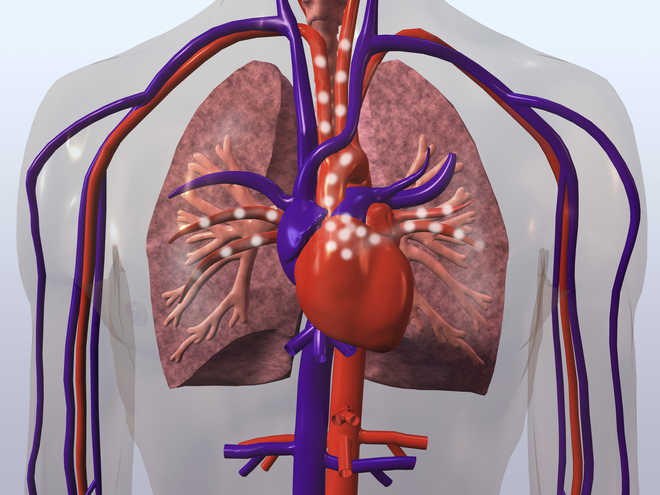Toronto: Researchers have created a 3D heart tissue that beats in synchronised harmony — like a heart in love — that will lead to better understanding of cardiac health and improved treatments.
Researchers at York University in Canada have devised a way to stick three different types of cardiac cells together, like Velcro, to make heart tissue that beats as one.
Until now, most 2D and 3D in vitro tissue did not beat in harmony and required scaffolding for the cells to hold onto and grow, causing limitations.
In this research, Professor Muhammad Yousaf and his team from York University made a scaffold free beating tissue out of three cell types found in the heart — contractile cardiac muscle cells, connective tissue cells and vascular cells.
The researchers believe this is the first 3D in vitro cardiac tissue with three cell types that can beat together as one entity rather than at different intervals.
“This breakthrough will allow better and earlier drug testing, and potentially eliminate harmful or toxic medications sooner,” said Yousaf.
In addition, the substance used to stick cells together (ViaGlue), will provide researchers with tools to create and test 3D in vitro cardiac tissue in their own labs to study heart disease and issues with transplantation.
“Making in vitro 3D cardiac tissue has long presented a challenge to scientists because of the high density of cells and muscularity of the heart,” said Dmitry Rogozhnikov from York University.
“For 2D or 3D cardiac tissue to be functional it needs the same high cellular density and the cells must be in contact to facilitate synchronized beating,” said Rogozhnikov.
Although the 3D cardiac tissue was created at a millimeter scale, larger versions could be made, said Yousaf, who has created a start-up company OrganoLinX to commercialize the ViaGlue reagent and to provide custom 3D tissues on demand.
The study was published in the journal Scientific Reports.




 Driving Naari Programme launched in Chandigarh
Driving Naari Programme launched in Chandigarh































